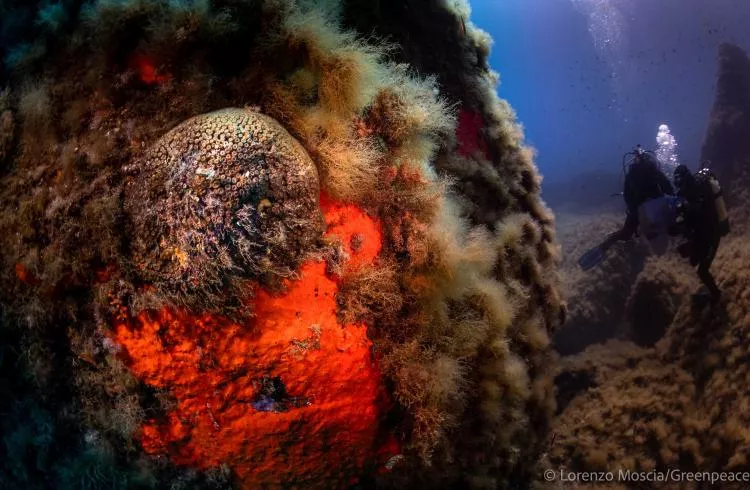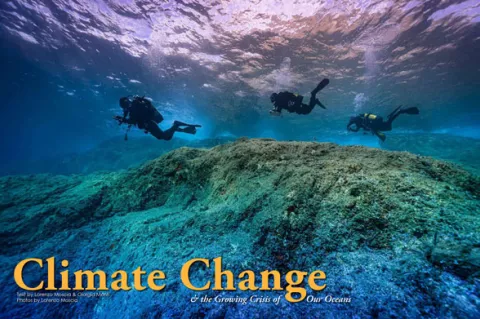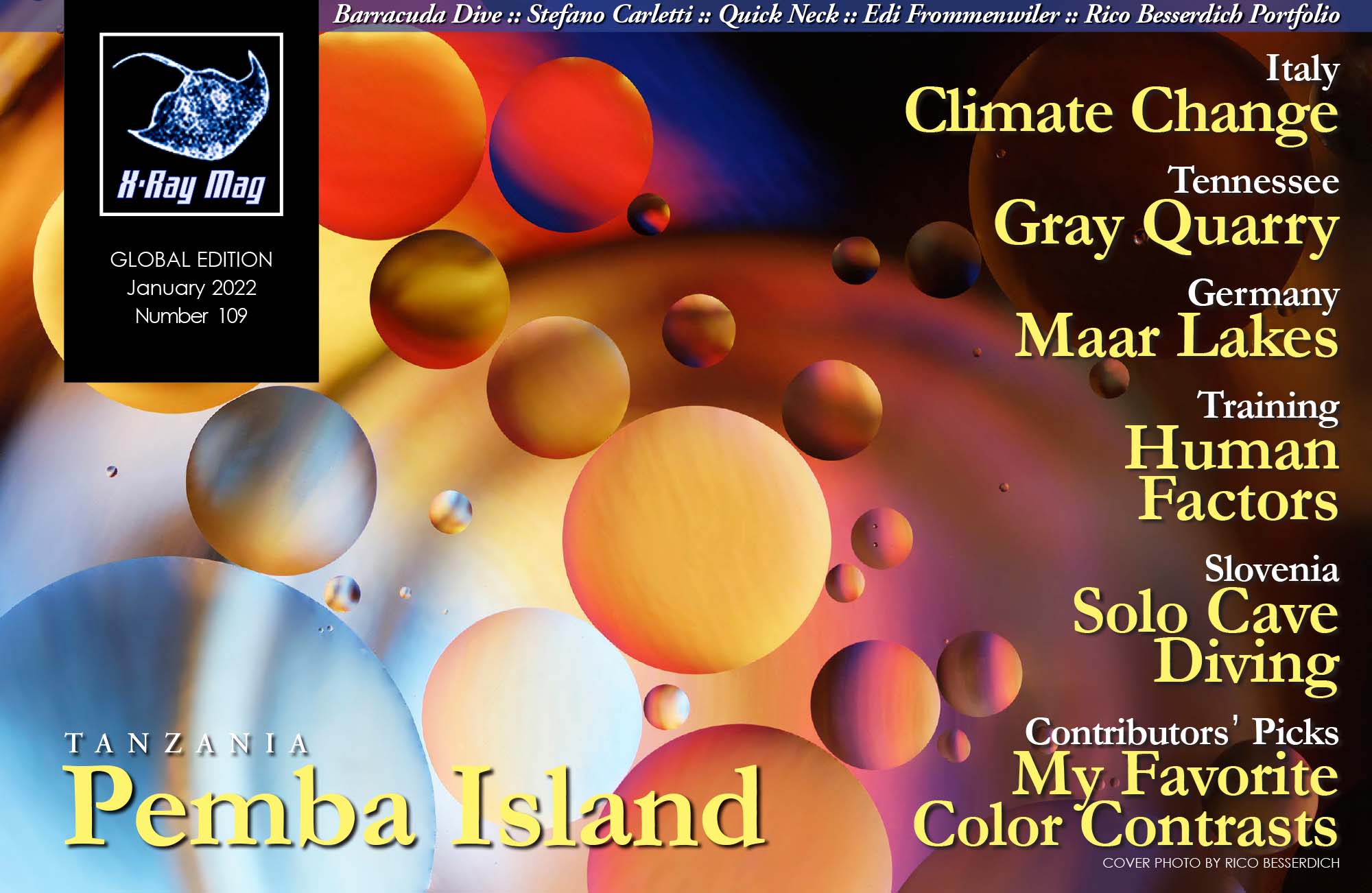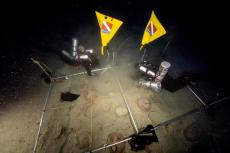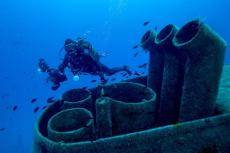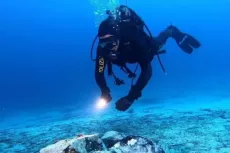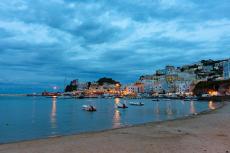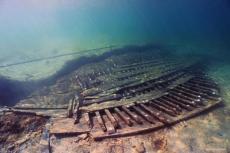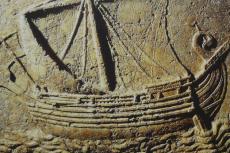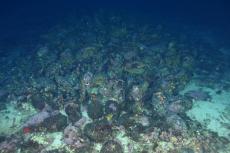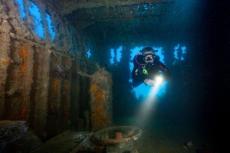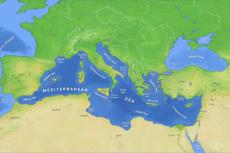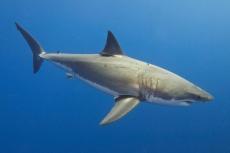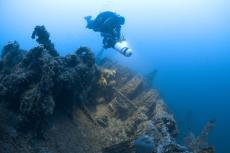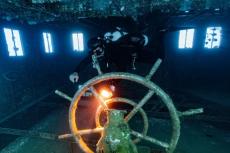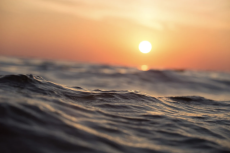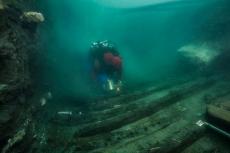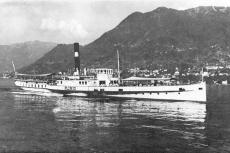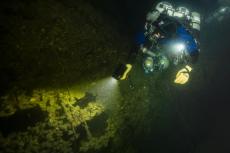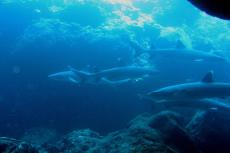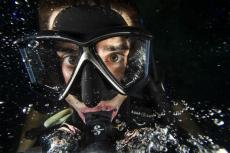Climate change is increasing the crisis of our seas, already under pressure due to several human activities. Rising temperatures are affecting and changing the underwater environment all over the world. The Mediterranean Sea, unfortunately, is no different from other seas. A group of specialists, coordinated by Greenpeace Italy, are monitoring the situation in the waters around Italy. Lorenzo Moscia reports.
Contributed by
The meeting took place at 6:00 a.m. on the little pier of Sant’Andrea on the northwestern coast of Elba Island, located five miles off the Italian coast of Tuscany. It was late November and recreational dive centres were already closed, as the dive season had finished; however, despite the cold and the grey sky, a group of divers prepared to embark on a zodiac, which would take them to several spots around Sant’Andrea to set underwater thermometers for the Greenpeace Italy’s “Progetto Mare Caldo,” or “Hot Sea Water Project.” My task was to document the job with video and photography.
By boat, our destination was just a few minutes away from the pier. Weather conditions were worsening; we could see several little cyclones forming above the island of Capraia only 18 nautical miles (33km) away from our dive site. “If the wind changes and the cyclones head towards us while we are underwater, let’s get off the moorings and go along the coast with the dinghy!” These were the last few words Andrea Romoli, who led the mission, shouted before showing me his thumb-down sign to signal the start of the descent. His words resonated in my head like a broken record, as the pressure built up.
After the first few moments of anxiety, I quelled any lurking breaths of hyperventilation, pushing away an onset of hypercapnia, and thought that even if the cyclones sailed over our heads, we would somehow be protected underwater.
We had two 15-litre cylinders each, below the buoy at a depth of five metres. Moreover, I was surrounded by experts. With me was not only Romoli, an incredible dive instructor; but also Dr Marco Sartori, an experienced diver and marine biologist from Elba who headed the ElbaTech lab and was one of the partners in the project; and Giorgia Monti, project leader of the Hot Sea Water Project for Greenpeace Italy.
We reached a depth of 40m, where the first thermometer had to be positioned, and we started working. Everything went smoothly, and an hour later, we returned safely to the surface with the job done. The first pilot station of the Greenpeace Hot Sea Water Project had been placed.
Project expansion
Since that time, at the end of 2019, the project has grown significantly, and now there are nine stations all around Italy, which, every hour and every day, measure variations in temperature in the water column to see how the rising of atmospheric temperature due to global warming affects the marine environment. After setting up the Elba station, other measuring stations have been placed in eight Italian Marine Protected Areas (MPAs), including Portofino in Liguria; Plemmirio in Sicily; Cape Carbonara, Tavolara-Punta Coda Cavallo and the island of Asinara in Sardinia; Torre Guaceto in Puglia; Miramare in Friuli-Venezia-Giulia; and the islands of Ventotene and Santo Stefano in Lazio.
I have been so lucky to follow the project in some of these areas, documenting some of the most amazing underwater spots around the Italian coast as well as the beautiful wildlife found here, which few may think the Mediterranean still has.
Together with Monti and two researchers from the marine ecology lab of the University of Genova, the scientific partner of the project, we dived the MPAs of Plemmirio in Sicily, Cape Carbonara in Sardinia and Torre Guaceto in Puglia, where thermometers are now in place and where we monitored the impact of rising temperatures on rocky-reef biodiversity.
Tremiti Islands
In addition, we visited the waters of the Tremiti Islands, where we had been called because the local MPA wanted to join the project. But even if our seas looked amazing through my camera, I was also able to document how fragile they were and how fast they were changing due to the impact of human activity. After seeing how marine life in the Tremiti Islands had been slowly but terribly impacted, I looked to Monti following one of the last of our dives there and asked: “What can we do?”
“Climate change is impacting marine ecosystems that are already under pressure all around the world,” she said. “While we are calling for coordinated and global actions to cut greenhouse gas emissions, it is becoming clear that investments are needed to strengthen and expand the global network of marine protected areas in order to protect marine biodiversity and give it a chance to adapt to a change that is already underway,” Monti said, with the determination of a campaigner in her eyes.
Data analysis
After almost two years, the project has collected a huge amount of data, and the analysis of the first-year data shows that water temperatures are raising throughout the water column and throughout the Italian seas, with two heatwaves already registered in the summer of 2020. Researchers are now analysing the most recent data to see if one of the hottest summers registered in the Mediterranean might have also affected water temperatures.
Even data collected during monitoring activities of our group’s dives have shown how climate warming is causing radical changes in marine biodiversity, including the loss of iconic Mediterranean species within the coralligenous habitat, such as the red gorgonian (Paramuricea clavata); and the phenomenon of “tropicalisation,” with many thermophilus (heat-loving) species moving to the northernmost regions. The data also indicated how organisms in areas protected from local human activities have been more resilient to the ongoing changes.
“The Mediterranean Sea, due to its nature as a semi-enclosed basin, is particularly susceptible to water warming, so that it has been placed among the regions in the world where warming rates are the highest,” said Dr Monica Montefalcone, scientific coordinator of the project for the University of Genova. “Mass mortality events, increased pathogen outbreaks, settlement of alien species with tropical affinity are causing marine biodiversity erosion, with the consequent loss of key species that play fundamental roles in the functioning of marine ecosystems. The scientific community must continue to monitor the state of our seas in order to understand the evolutionary trends of marine ecosystems over time,” said Montefalcone, when we worked together in Sardinia.
Looking forward
Today, the “Hot Sea Water Project” network in Italy has become a strong reality. The project will run until 2022. Its objective? To provide key data to develop proper mitigation and protection measures, and to save for future generations the amazing underwater beauty that I was lucky to document.
Widely published photojournalist Lorenzo Moscia has been a photographer for over 20 years and has just recently decided to follow the little inner voice that has urged him since childhood to get serious about going underwater. In the last two decades, he has worked with Greenpeace as a staff photographer in Chile and Italy. It was during this time that he decided to dive underwater and cover some of the campaigns Greenpeace does, which are related to the sea. For more information, visit: lorenzomoscia.com.

